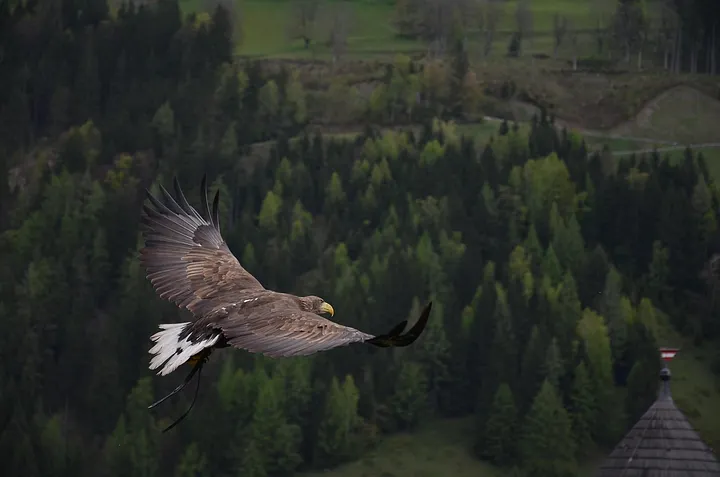
The skies above my home have recently been the soaring space of eagles. I watch the skies often, especially on weekends when my wife and I spend time relaxing in our backyard. Hawks, sparrows, and a variety of other birds often fly above us, but never as high as the airplanes we see carrying passengers to who-knows-where. But then came the eagles.
I didn’t believe it at first. “Eagles,” I wondered. “This is a first.” We live in Central Kentucky, so seeing eagles above us wasn’t out of the realm of possibility, we’d just never seen them. As I watched, I marveled at the impressive way they soared at incredibly high altitudes. One even performed some interesting acrobatics as if showing off. But flying at 10,000 feet or higher, I wondered how such a thing could fly so effortlessly. At that altitude, the air is thinner and winds potentially stronger than near the ground where other birds play it safe. That got me thinking about our role as leaders. How prepared are you to lead at the top? Here are a couple of things to consider as you prepare.
The air is thinner at the top. Because eagles fly at such high altitudes, their lungs are conditioned to handle the thinner air. Mountain climbers experience this and have to condition themselves before attempting the most challenging climbs. Similarly, leaders climbing to the top of their organizations should condition themselves for the pressures that will come when they get to the top. Leaders who step into positions of great responsibility at the top of their organization without proper preparation might find that the pressure is so great and “the air so thin” that they can’t breathe.
Operating at the top will expose you. Eagles are not afraid to fly where the turbulence is greater. Their massive bodies and impressive wingspan allow them to absorb the harsher conditions at higher altitudes. But when other birds attempt to fly as high, their weaknesses are exposed. A good friend of mine recently visited an area of higher altitude in Colorado. This guy is no stranger to higher altitudes and in fact has climbed some of the highest mountains. But on this trip, he struggled to climb a set of stairs without having to take a break. A wise visit to the hospital resulted in the discovery of a condition that needed immediate attention. Turns out that operating at the higher altitude exposed a weakness that he’d not noticed at lower altitudes. Similarly, operating at the top will expose you as a leader. Your strengths and weaknesses will come to light. Areas of needed improvement that you got away with at lower levels of leadership could be your undoing if continued while at the top.
But the good news is you can be prepared to successfully lead at the top if you take the time to prepare yourself. Are you daring enough to soar with the eagles or are you playing it safe with the finches? Consider for a moment your professional goals. How high do you aspire to lead? What can you do now that will prepare you to operate where the air gets thinner and your weaknesses will be exposed?
Preparing to Lead Where Eagles Dare was originally published in Horizon Performance on Medium, where people are continuing the conversation by highlighting and responding to this story.
